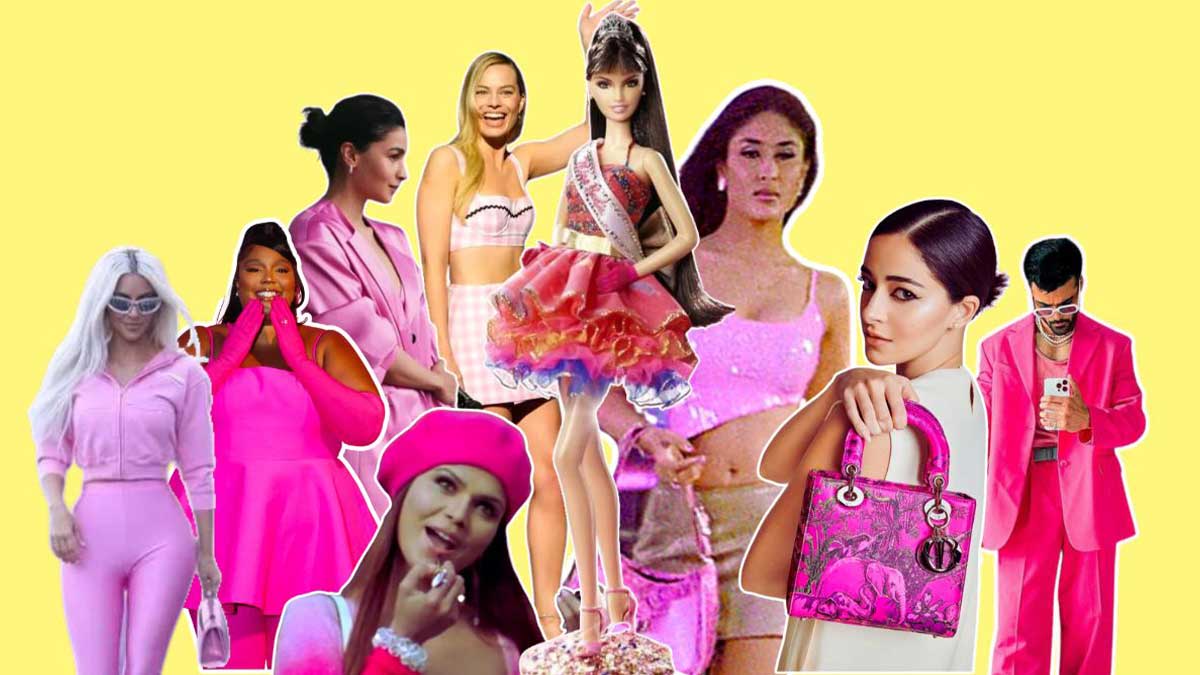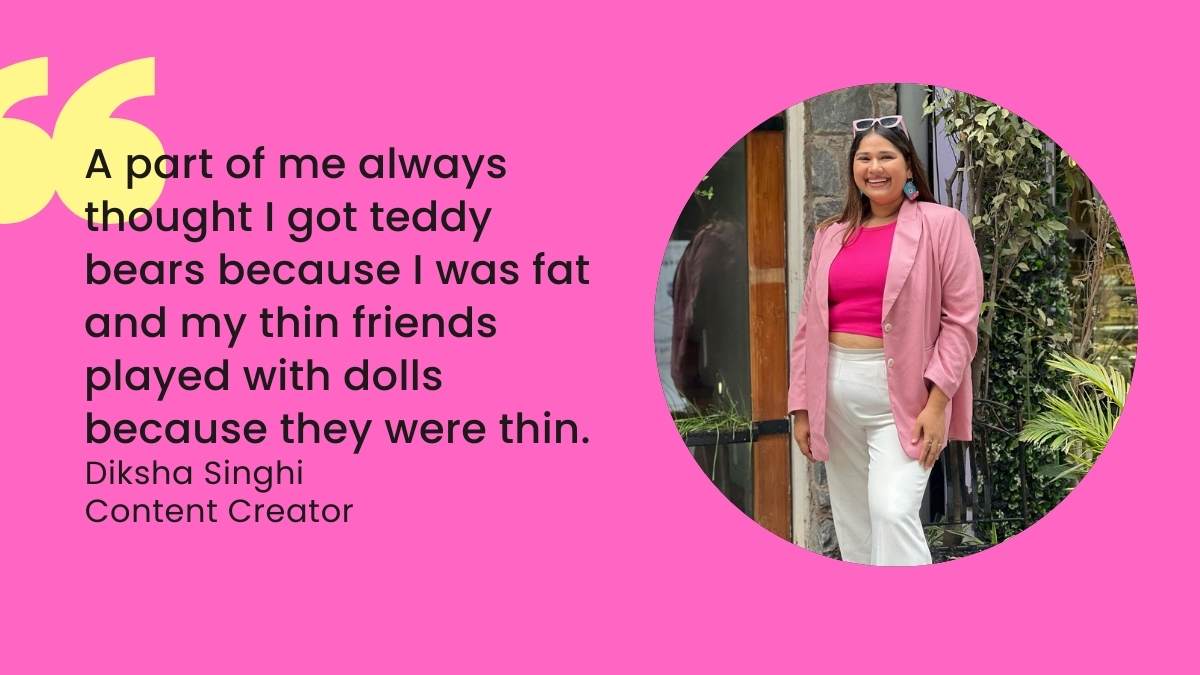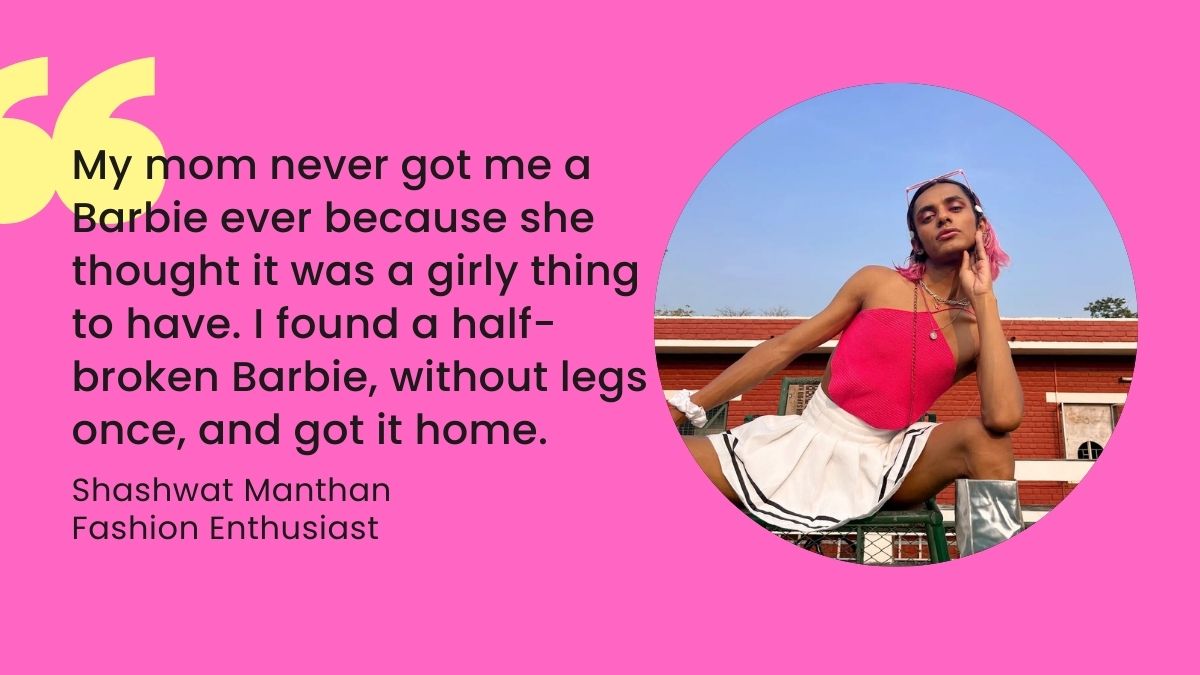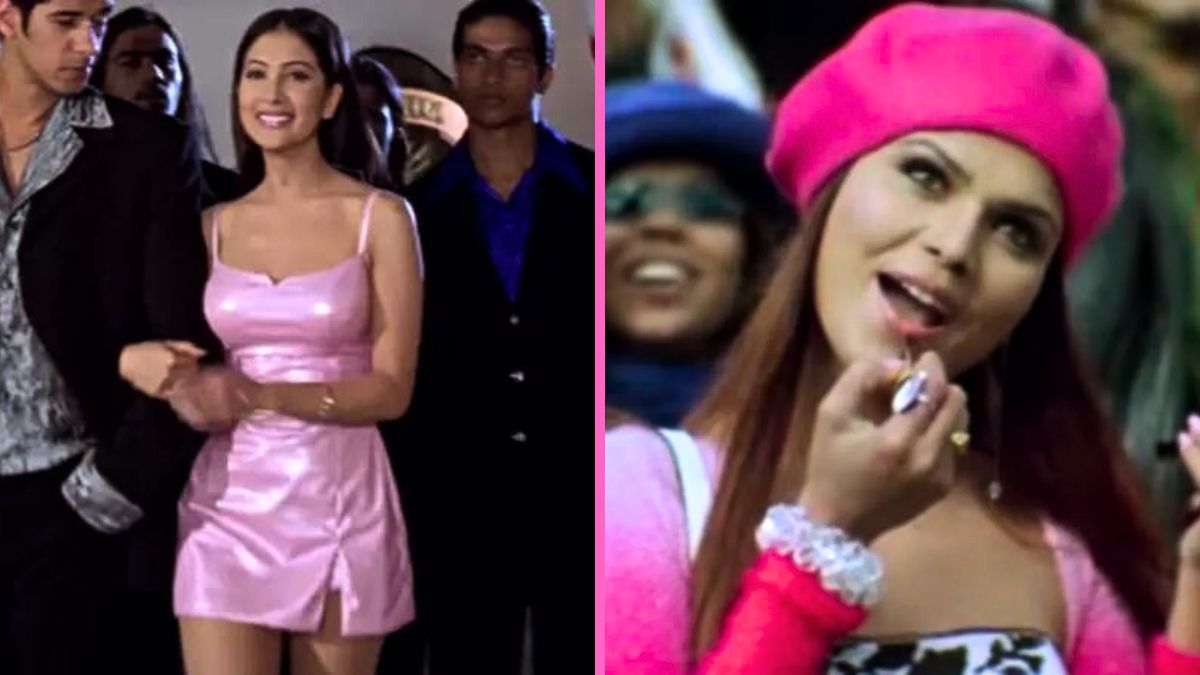
Think Barbie, think pink. In short, that's what Barbiecore is all about.
The dominant colour in the iconic doll’s wardrobe was pink. Now, with the release of the ‘Barbie’ movie, the trend ruling runways and fashion pages is ‘Barbiecore’.
With Greta Gerwig’s ‘Barbie’ movie starring Margot Robbie taking the world by storm, and several recent iconic pop culture moments featuring the iconic pink, this trend is the new ‘in thing’. From ruffles to dainty flares and bubblegum pink to fuschia, the trend has witnessed the biggest stars hop onto the bandwagon. Celebrities like Kim Kardashian, Lizzo, of course, Margot Robbie have sported many iconic outfits that stick true to the Barbiecore theme.

India’s association with pink though dates back to much earlier. Diana Vreeland, former editor of Harper’s Bazaar, and globally acclaimed fashion guru, had once said, “Pink is the navy blue of India.” It pretty much sums up the country’s love for the colour. Much before the name ‘Barbiecore’ came into vogue, several pop culture moments were sealed in pink. Think Poo played by actor Kareena Kapoor in ‘Kabhi Khushi Kabhie Gham’.
We do a deep dive into all things pink, the history of how this trend crept into the fashion world to become what it is today, and how India embraced ‘Barbiecore’ long before it became a thing.
This is our series Oddly Obsessed, where we try to decode whacky internet trends, sensations, and pop culture phenomena that the world can’t get enough of.
Don't miss: Oddly Obsessed With Rakhi Sawant: Decoding Paparazzi’s & Controversy’s Favourite Child
Barbie, the doll, was conceptualised with the aim of letting little girls dream of becoming what they wanted, and looking good while at it. From a nurse to an astronaut to a surgeon, the doll could be anything it wanted, while sporting the right clothing for it. The OG doll’s head would be easily removable, allowing for her outfits to be changed. Her clothes were even sold separately.
In its earliest forms, Barbie embodied conventional beauty. Hourglass figure, long eyelashes, pointy heels and of course, pink dresses. The first ever Barbie was clad in a black and white swimsuit. The pink got introduced with subsequent dolls, and over time, became so iconic, that Mattel, the manufacturer, even copyrighted a Pantone shade called Barbie pink (219 C).
The unrealistic, unachievable body standard received its fair share of criticism. 
Diksha Singhi, a Delhi-based fashion enthusiast and content creator chats with HerZindagi about how while growing up, she was fat and thus received teddy bears as gifts, but never dolls. “I had over 25-30 soft toys but not one doll (forget Barbie, not any doll). Maybe, if they made Barbie dolls, in different sizes, people gifting could relate to that gift being for me and gift me one. Maybe I am over analysing, but a little part of me always thought I got teddy bears because I was fat and my thin friends played with dolls because they were thin. But perhaps that's why, many fat friends are just given the nickname of teddy bears and pandas?”
Barbie dolls, and their fashion, were also often only touted as toys for girls due to their femininity, and the constructs of a patriarchal society. Shashwat Manthan, a fashion enthusiast, said, “I always wanted a Barbie. But my mom never really got me a Barbie ever because she thought it was a very girly thing to have. I found a half-broken Barbie, without legs once, and got it home, and made it clothes out of a handkerchief. My mom never really appreciated it."

To him though, Barbie symbolised the ability to dream it all and achieve them with a smile. “She was always so put together, she'd have heels on, a cute little outfit, you could dress her up and move her around. She could be whatever you wanted. Very metaphorically, I saw it as that she would always do it with a smile, no matter what while looking absolutely awesome," he said.
Over time, the doll did get a makeover in a bid to become more inclusive. Different races, body types, disabilities, and even a trans-Barbie became part of the universe. A doll with prosthetics, a doll with Down syndrome and more were added to the list, paving the way for a wider definition of beauty.
The trend came into vogue in 2022. Lyst's "Year in Fashion" report for 2022 revealed that Barbiecore was the leading trend of the year. It found its peak point in June 2022, with the release of images featuring Robbie dressed as Barbie in a vibrant all-hot pink Western ensemble. These visuals quickly went viral on TikTok, leading to a surge of interest in pink clothing with a remarkable 416% increase in searches.
From fashion show collections to brands coming up with Barbiecore-themed drops in the run-up to the movie release, pink is everywhere.
One of the standouts was Pierpaolo Piccioli’s All-Pink Valentino Show in 2022. A shade of hot pink was the colour of the collection: a new Pantone officially titled ‘Valentino Pink PP’. Glitter, gloves, feathers to bikini tops, coats, trails and heels, everything featured the eye-grabbing loud pink.
View this post on Instagram
The Barbie movie promotions have taken the trend to another level. The lead actress Margot’s carefully curated outfits at the movie promotions have often created headlines. Ryan Gosling, the actor who plays Ken in the movie, also adopted the pastels and pinks typically synonymous with Ken while promoting the movie. The film’s marketing team collaborated with several notable brands like Aldo, Nyx, Airbnb and more to create special products themed on the doll and the movie. All of this has sparked a renewed interest in the trend.
Long before Barbiecore plunged people into an obsession with hot pink, India had its own affair with the shade, better known as Rani pink.
It’s a shift from the softer pastel hues of pink. Rani pink, a shade in between hot pink, fuchsia and magenta, has been a favourite for time immemorial. It’s robust, regal and desi.
According to some reports, in the era before chemical dyes, various shades of red and pink were derived from the root of the Indian Madder plant. Rumours suggest that some of these pink hues closely resembled the deep, rich pink of the precious gemstone, the ruby. As a result, it became a favoured colour among the kings and queens of India, giving rise to the name "Rani Pink" to symbolise its association with royalty.
When Valentino launched its first-ever store in India, in Delhi’s DLF Emporio mall, the dominant colour on display was Valentino Pink, which is indeed quite close to what is popularly called Rani pink here.

In the same mall, just a few metres away, another luxury fashion giant, Louis Vitton had its India-only capsule collection of women’s footwear on display at the same time. The footwear featured a new shade, developed especially for the collection, that the brand referred to as “the joyous shade of Indian pink” aka “rani pink”. From heels, mules to pumps, the collection was launched for the 2022 winter festive season.
Dior’s Fall 2023 show in Mumbai celebrating the brand’s connection with Indian artisans featured the loud pink in abundance. Post the show, the French fashion house even launched an India-only Lady Dior bag, which was announced with actor Ananya Panday. The colour? Rani pink, with ornate gold detailing and Indian motifs.
View this post on Instagram
Very evidently, a colour strongly associated with the country by these global giants, was this pop shade of pink.
That’s understandable, as among all the lehenga cholis, innovative necklines and sequins, one constant in Indian bridal outfits has been Rani pink. From Benarasi sarees to salwar suits, the colour has been used in every imaginable way, all while exuding regality as the name suggests.
Almost every Bollywood actor, from Sonam Kapoor, Alia Bhatt to Deepika Padukone, has sported the colour. Actress Katrina Kapoor was the first actress to even have an official Barbie doll inspired by her.
View this post on Instagram
Bollywood has produced innumerable outfits that remain etched in one’s mind, and some of the standout ones scream ‘Barbiecore’ even though the trend barely existed at the time.
A common phenomenon has been movies adopting the aesthetic, especially for high school or college clothing.
Think actress Kareena Kapoor’s shiny pink backless top in ‘Kabhi Khushi Kabhie Gham’ which has gone on to define the Y2K fashion aesthetic. A pink jacket, pink shoulder bag and pink lips completed the look. The resurgence of Y2K fashion, with GenZ leading the way, adopted the same style palette very recently.

In the cult favourite ‘Mohabbatein’, the song ‘Ankhein Khuli’, where students dance in a prom, Kim Sharma sported a fitted pink mini dress which today could be the poster outfit for any Barbiecore-themed event. Strappy, shiny, short and cute, it ticked all the boxes.

While Rakhi Sawant in the song ‘Chale Jaise Hawayein’ from the movie ‘Main Hoon Na’ hit the mood board, Amrita Rao in the same movie gets a makeover, where she is seen in a Rani Pink salwar suit suggestive of a revamped style statement.
While many still associate the doll with the most conventional definition of femininity and beauty, Barbiecore, the trend, has seen participation from all kinds of body types, genders, races and more.
In Hollywood, singer Lizzo sported a hot-pink ensemble from Valentino's fall/winter 2022 collection for her "Lizzo's Watch Out For the Big Grrrls" premiere, Sebastian Stan sported another outfit from the same collection at the 2022 Met Gala.
In India, the trend has been most diversified by content creators donning their creative hats.
Content creator Diksha Singhi (@alwaysalittlextra) created a styling guide for plus-size bodies looking to adopt the Barbiecore style. “I think now the Barbie aesthetics is less about the waist size but more about the small detailing. It’s about playing with your idea of fashion, your idea of Barbie. It’s about using accessories, clothes, hairstyles and shoes but not about how tall your legs are or sharp your jawline is,” she said. “I am currently living in my pink girl era. Just wearing pink after pink. Pink is like the new yellow, it adds happiness.”
View this post on Instagram
Ankit, part of @the.vogue.vanity couple, sported an all fuschia suit.
Having the tag ‘fem-Barbie’ on their bio on Instagram, Shashwat (@_sugar_fudge_) regularly dons cute Barbie-themed outfits, ranging from halter neck crop tops to micro-white skirts. "Pinks are a pop-y colour, with so many different shades! It gives you an edge and looks so great on both girls and guys," said Shashwat.
View this post on Instagram
At the core of this trend that is to be here to stay, is universality. It’s fun, it’s loud, it’s cute and customisable. Its broad spectrum of adaptations and the fact that it's been in vogue for over a year now bears testament to how popular it truly is. Trends like minimalism and quiet luxury fashion did shake up the world but probably weren’t adopted by so many people. The scope for experimentation and personalisation is perhaps what makes Barbiecore a hot (pink) favourite.
Our aim is to provide accurate, safe and expert verified information through our articles and social media handles. The remedies, advice and tips mentioned here are for general information only. Please consult your expert before trying any kind of health, beauty, life hacks or astrology related tips. For any feedback or complaint, contact us at compliant_gro@jagrannewmedia.com.